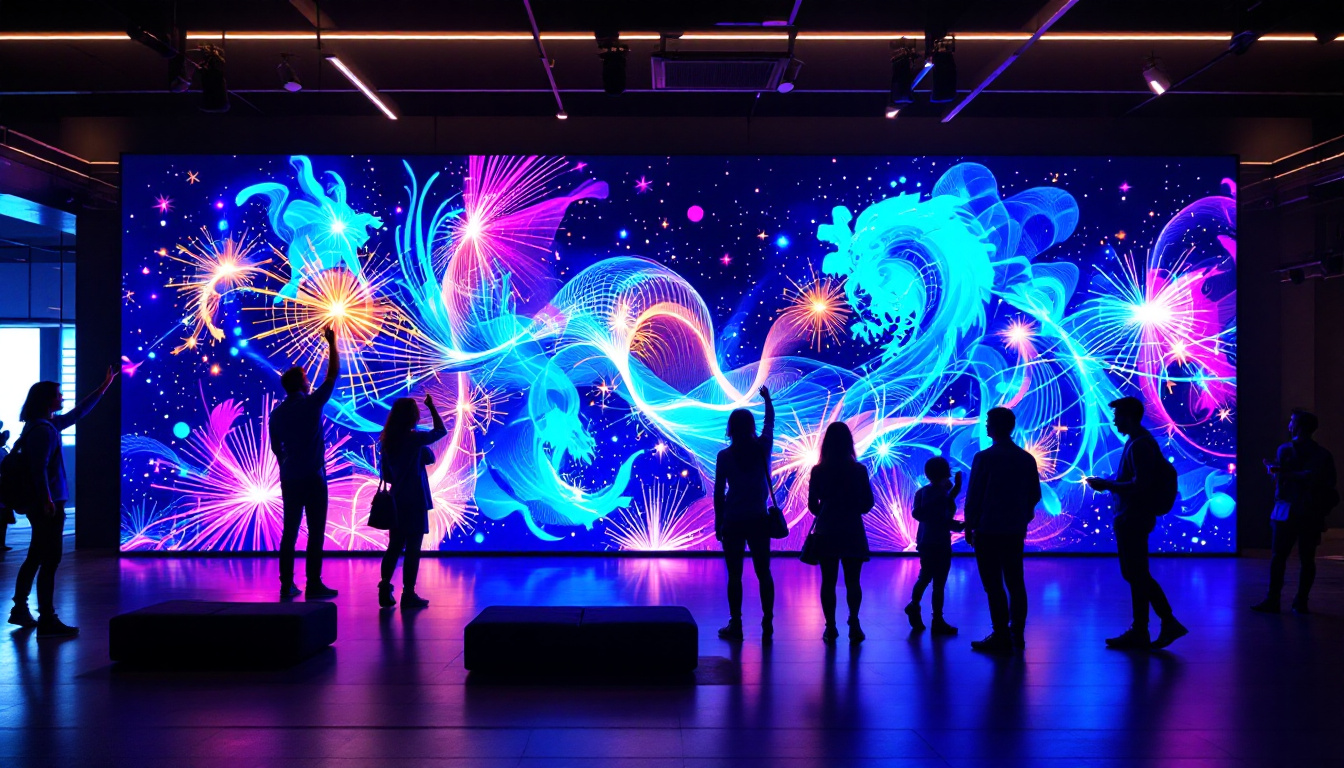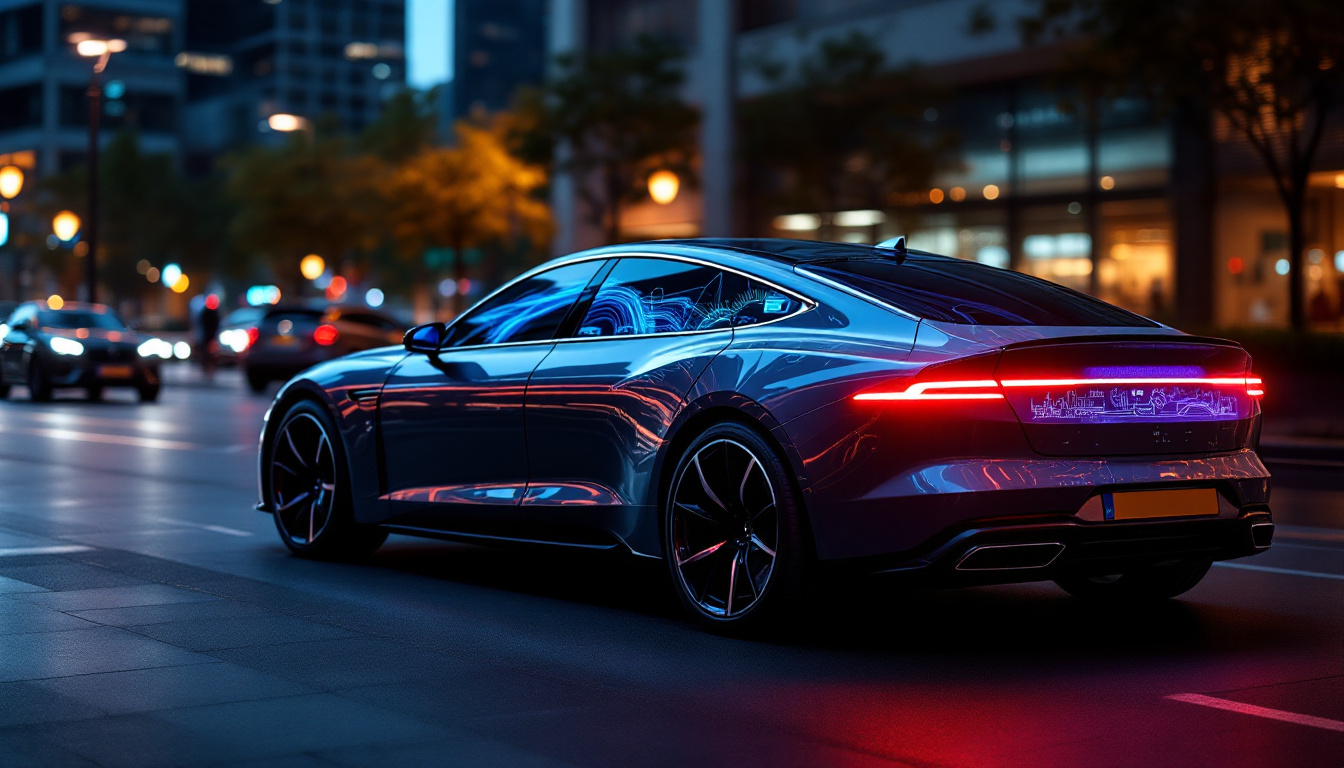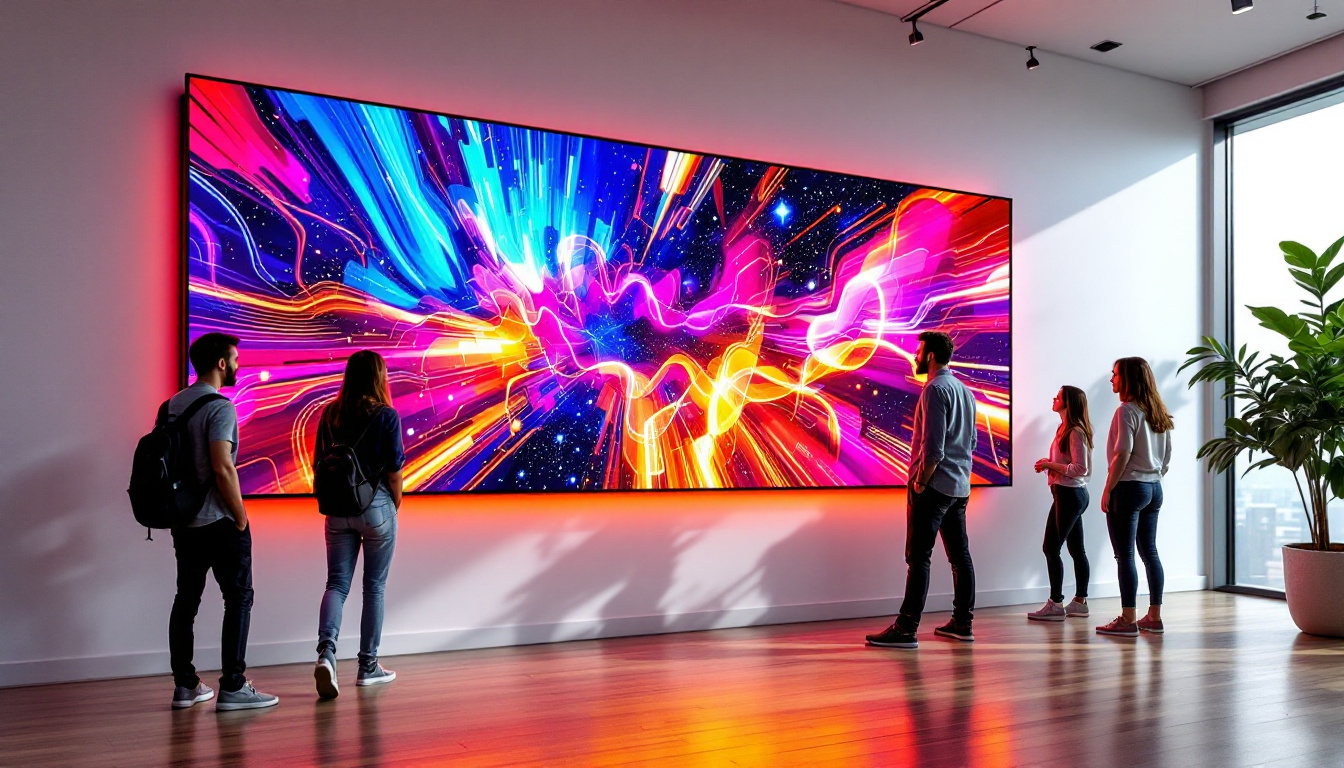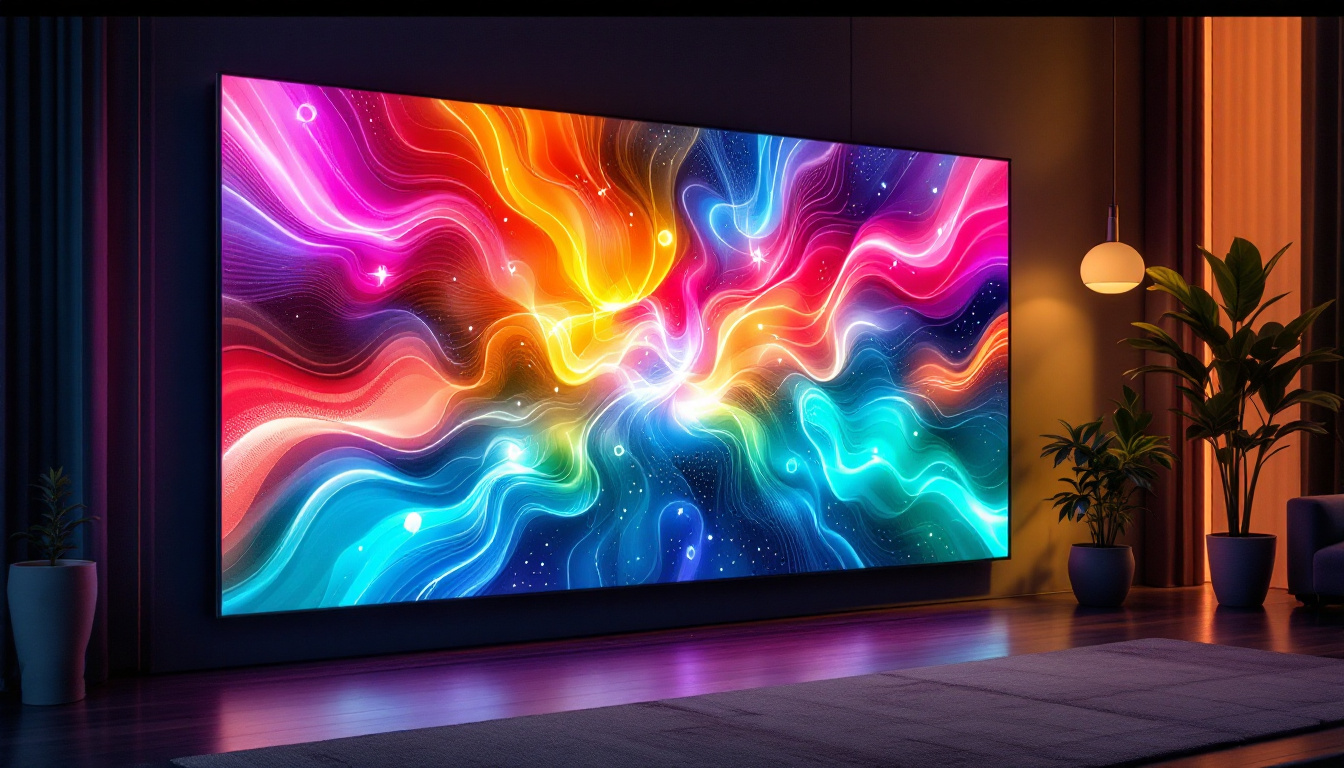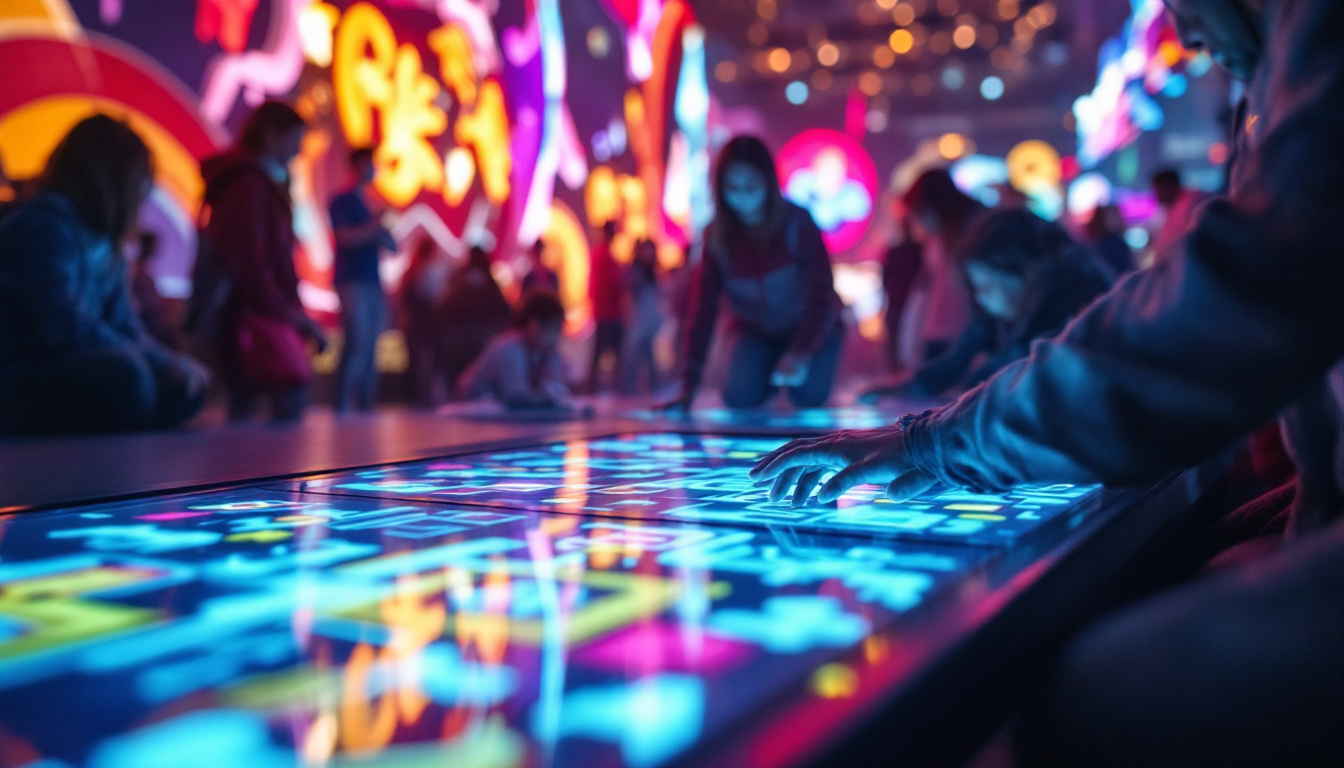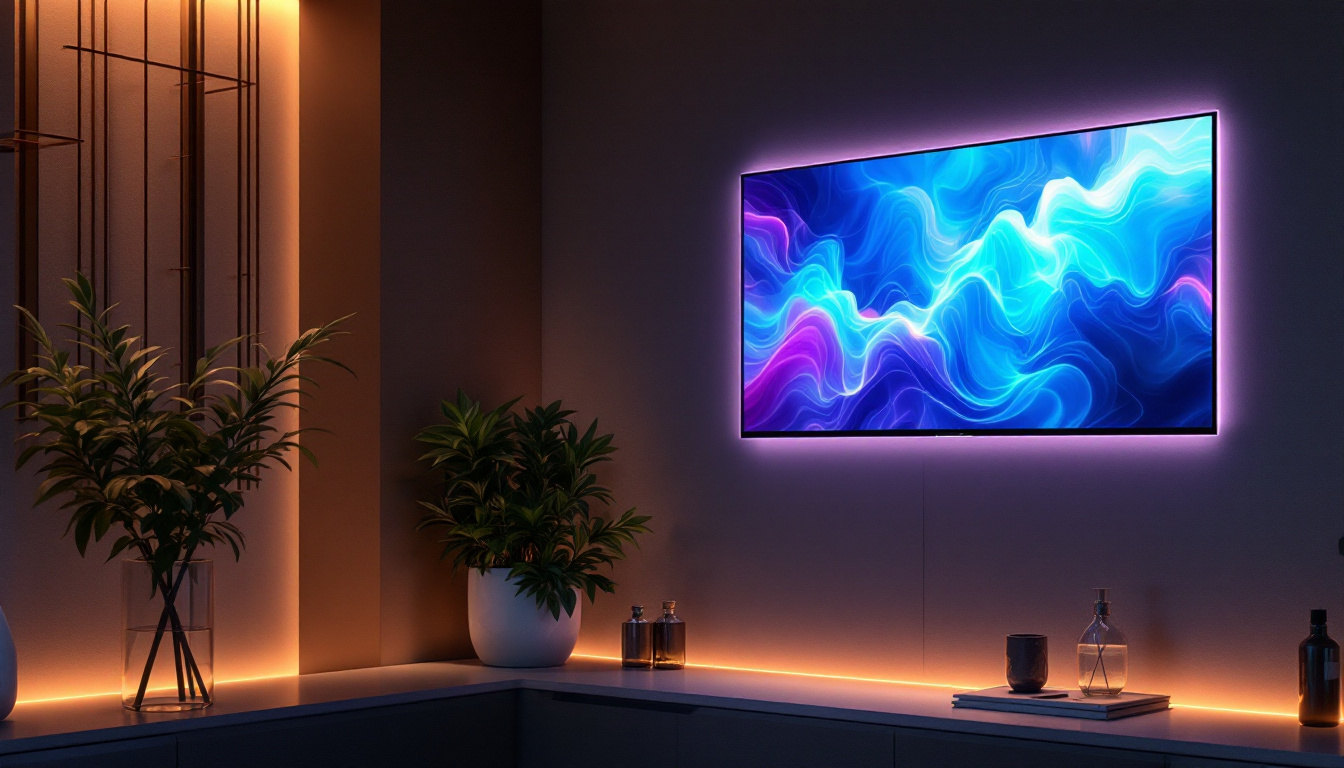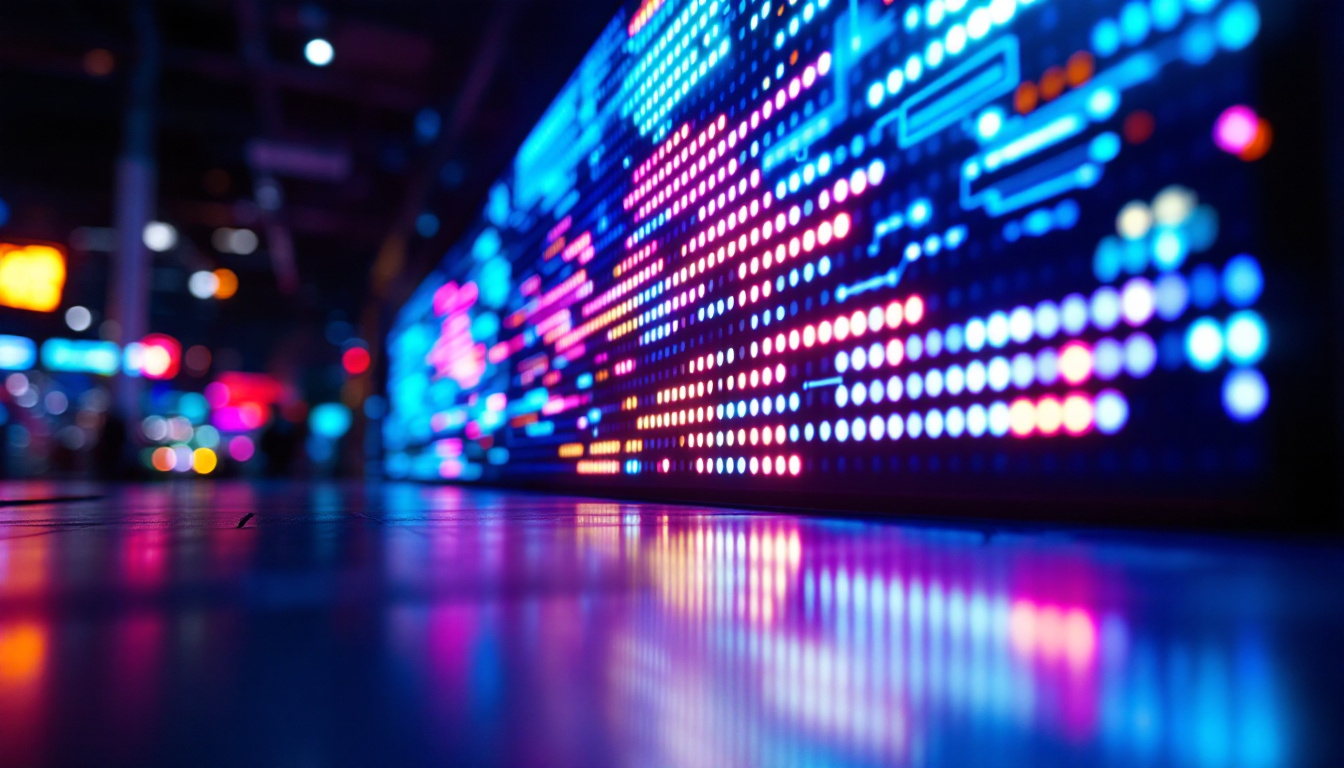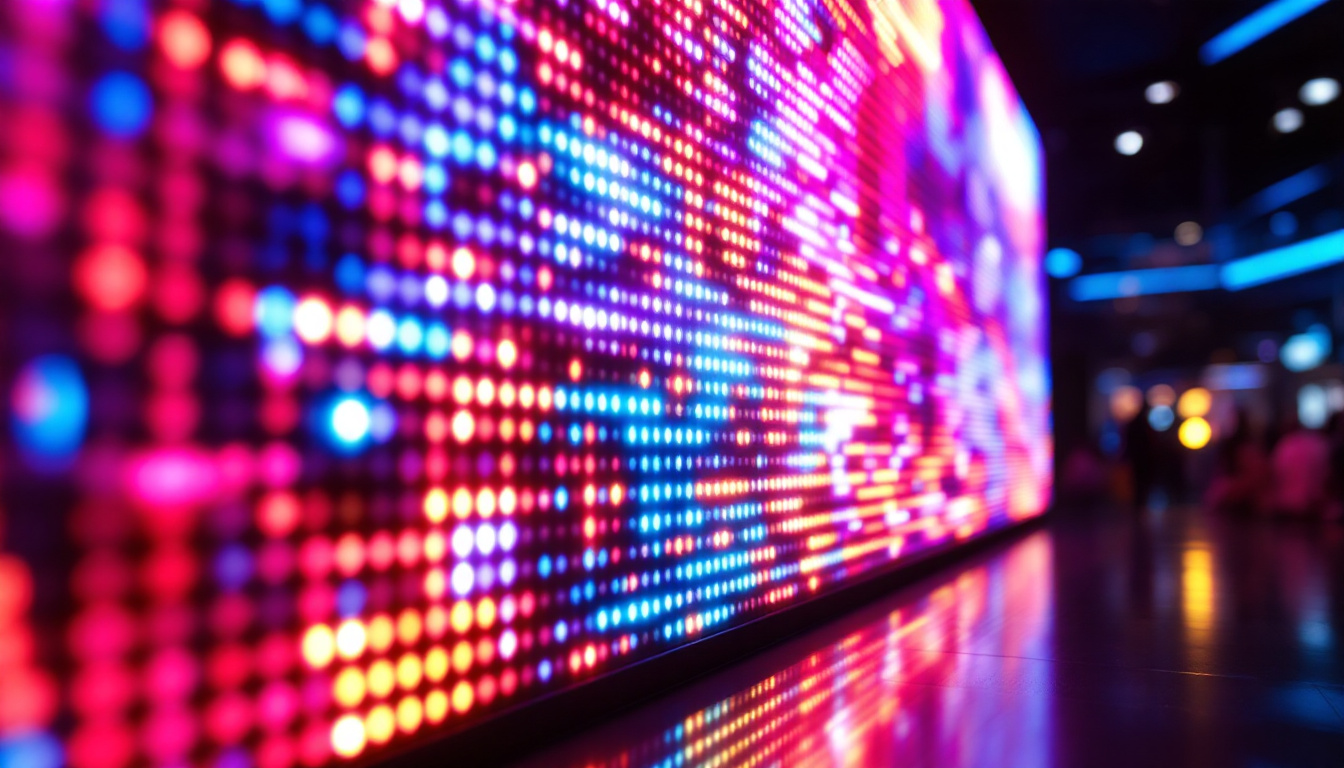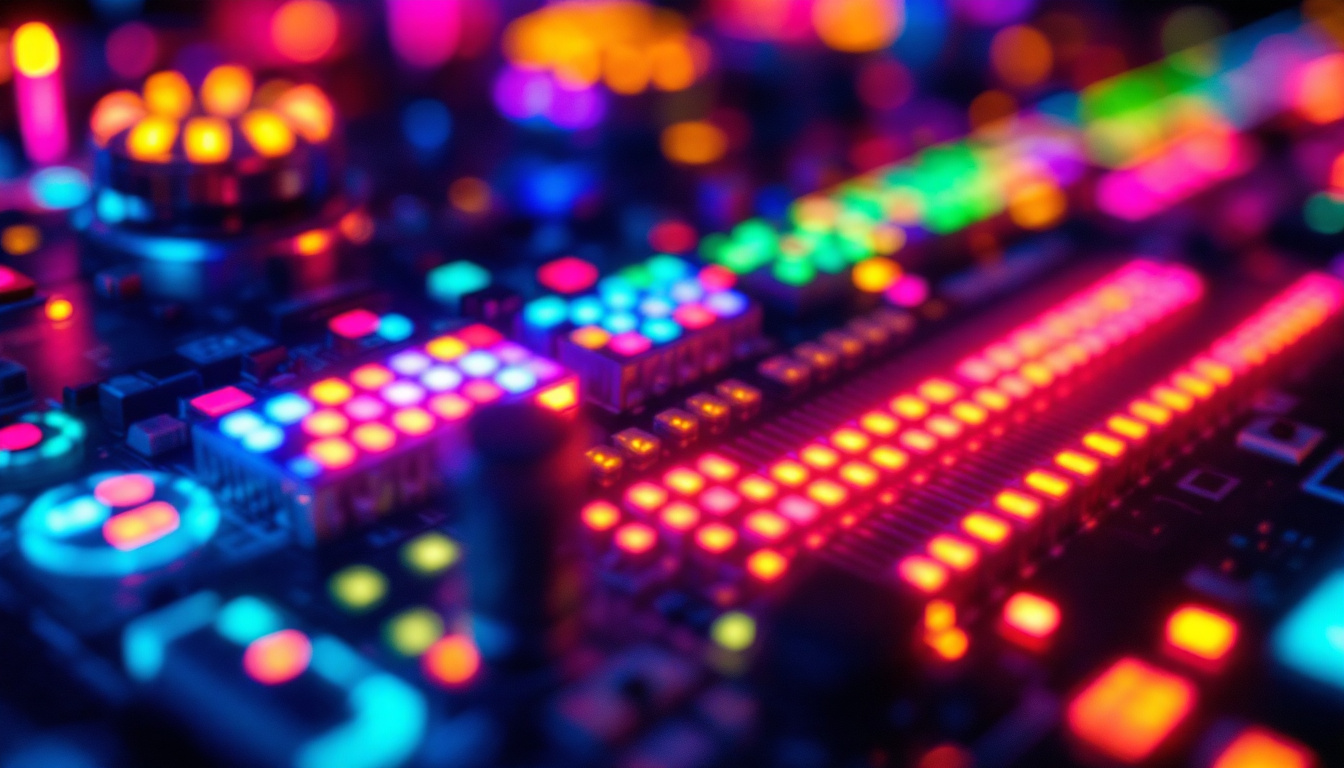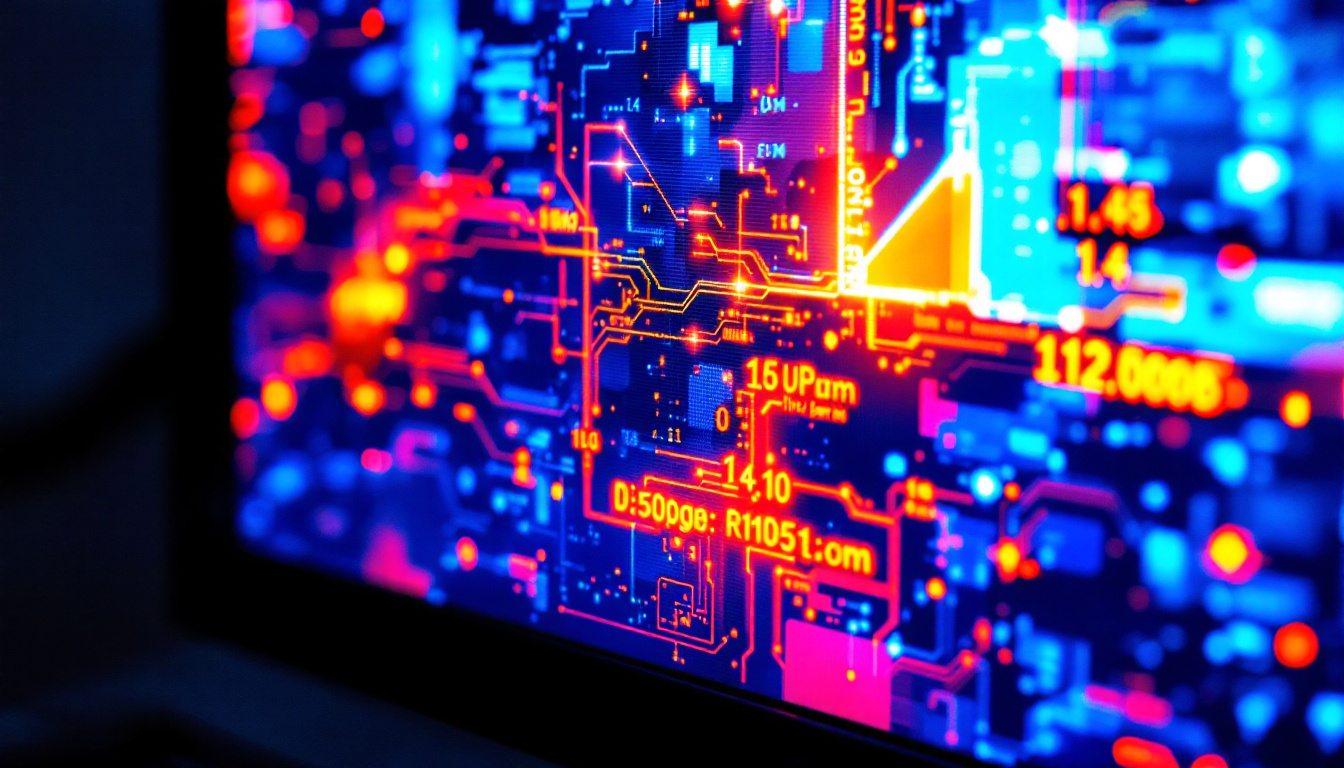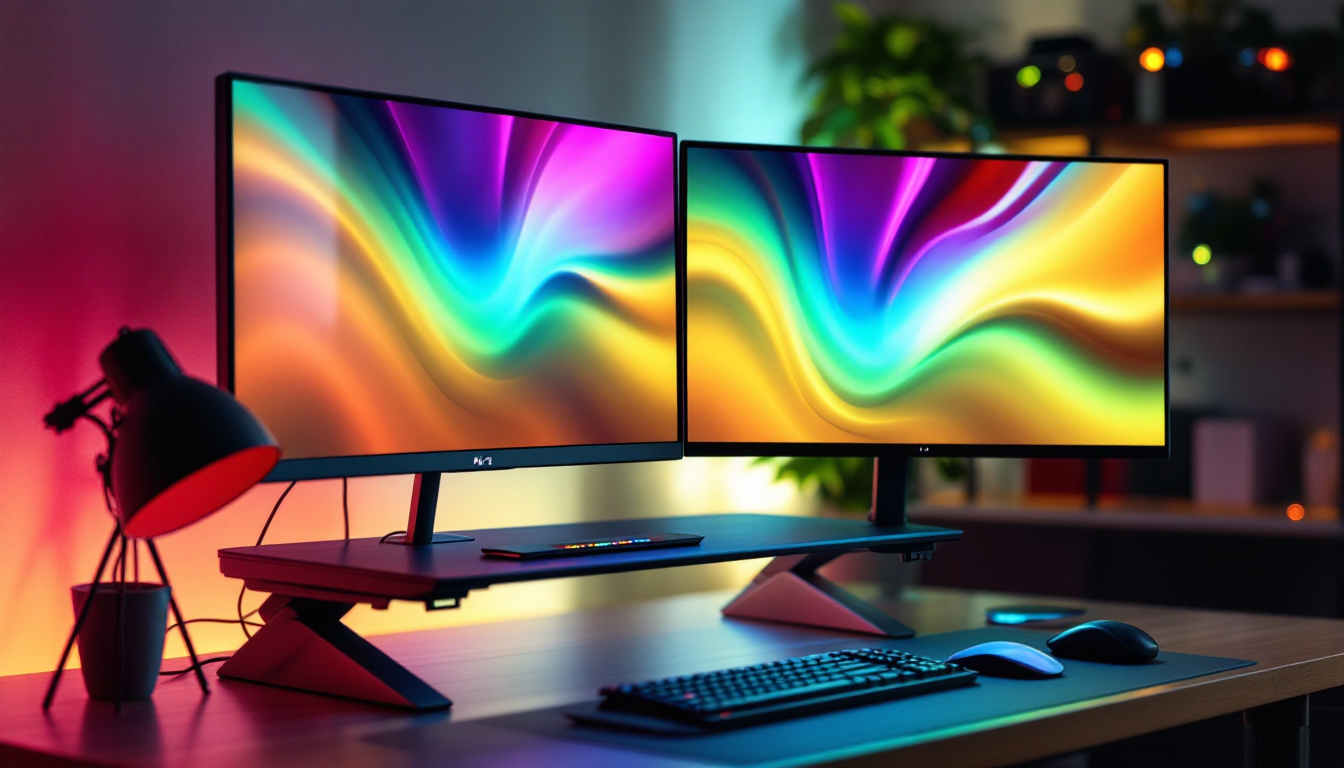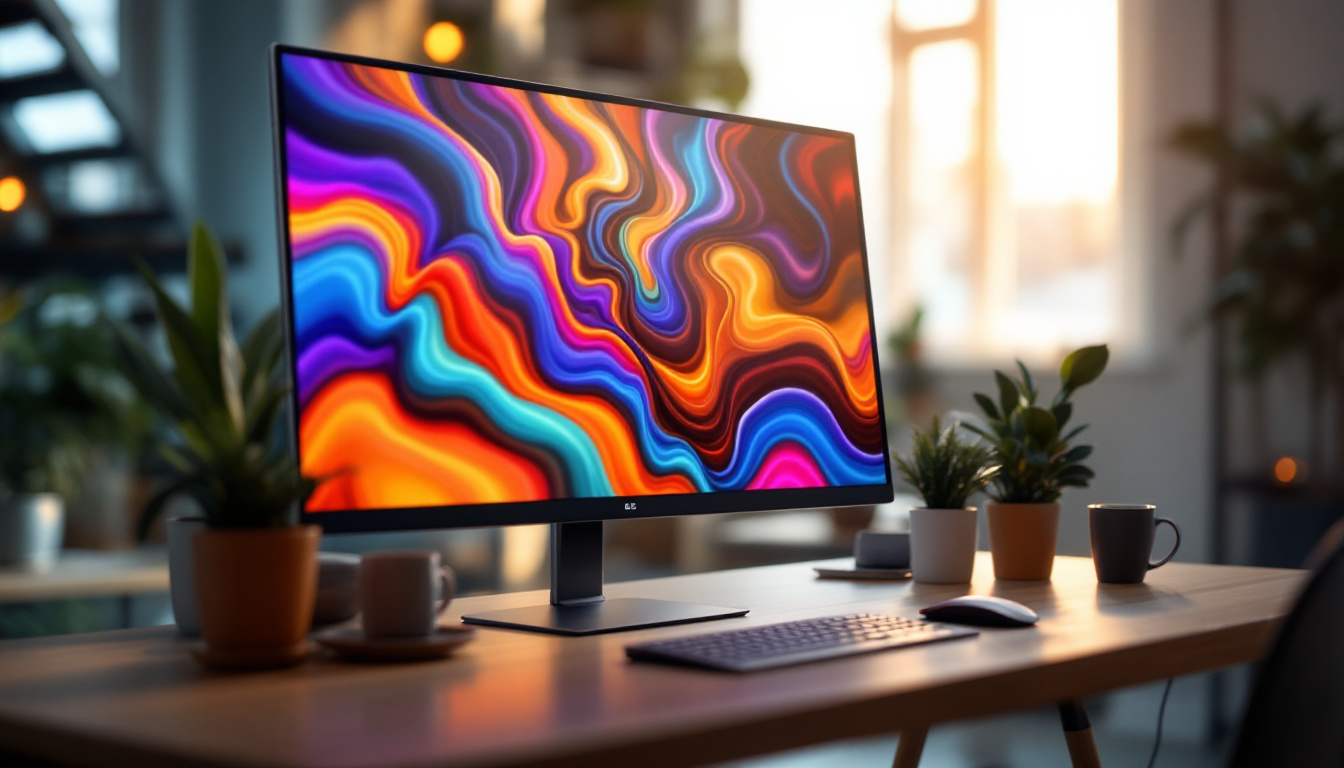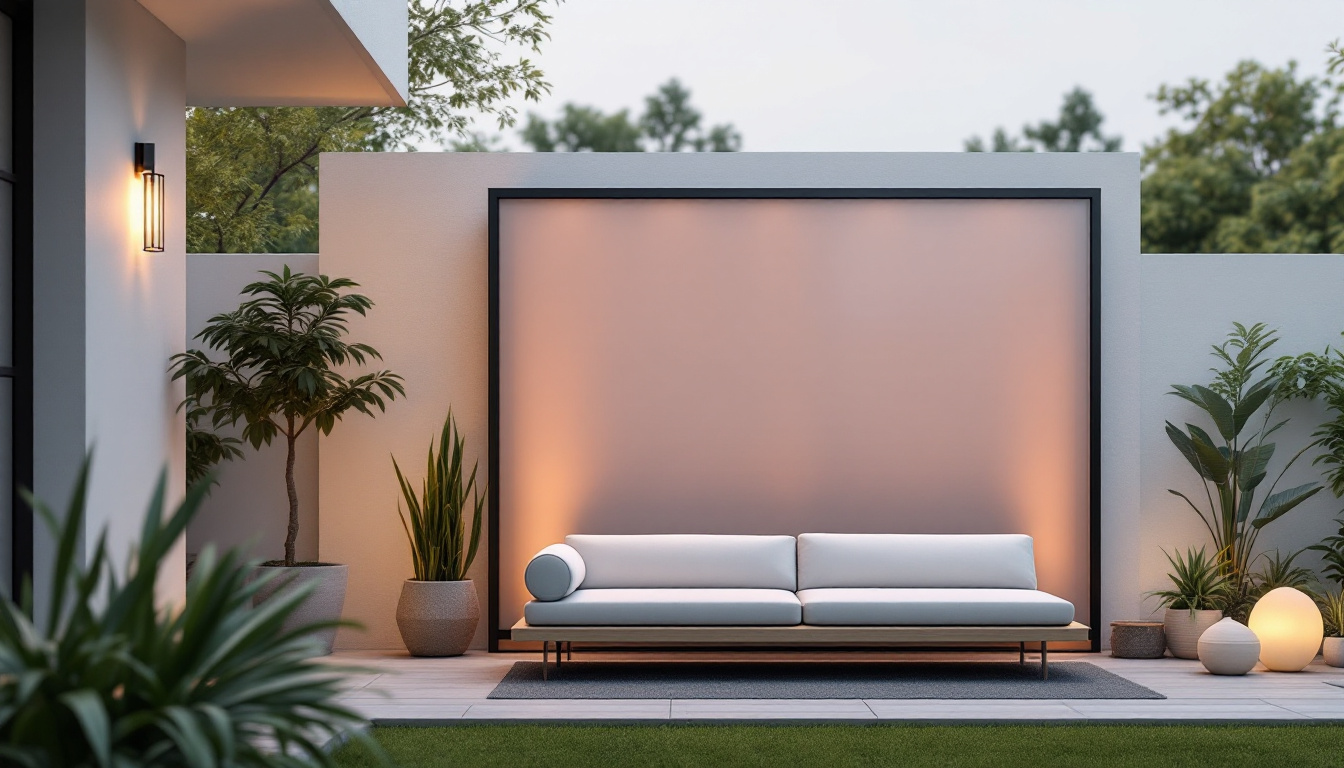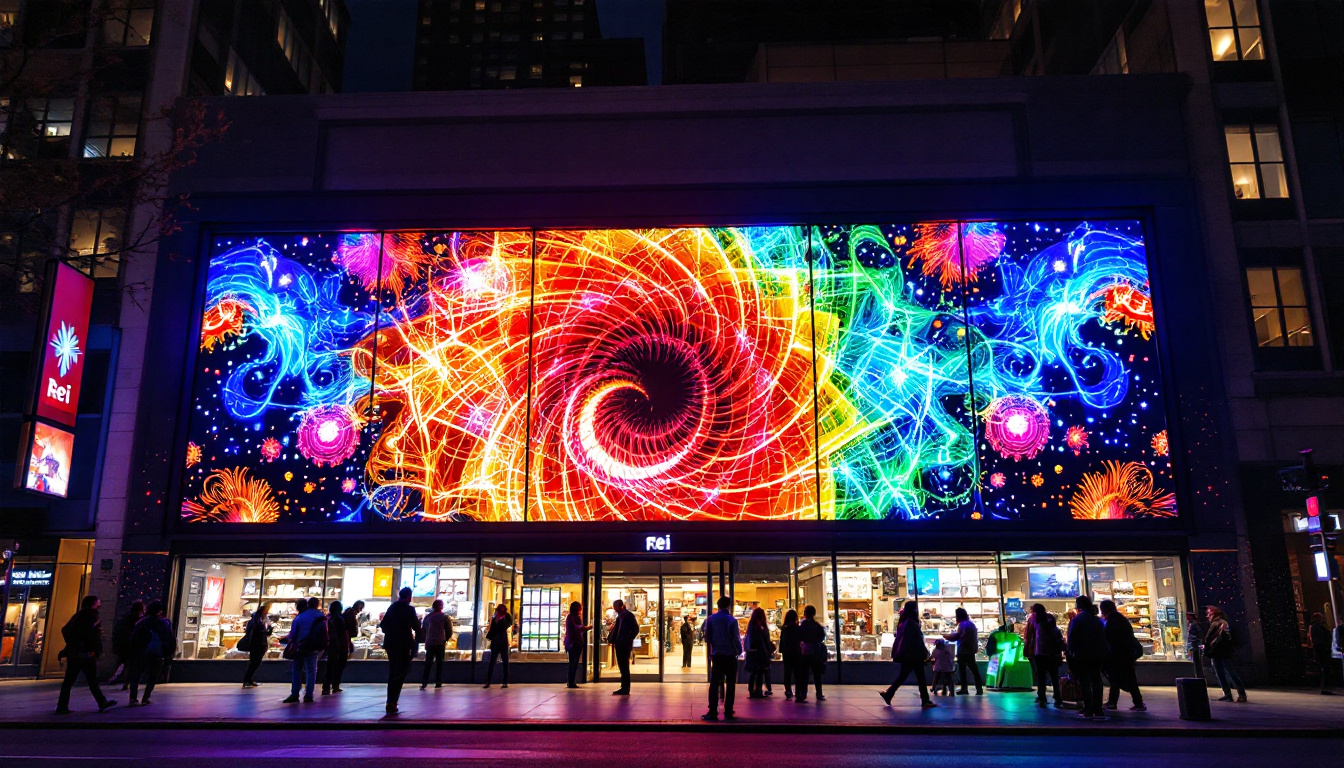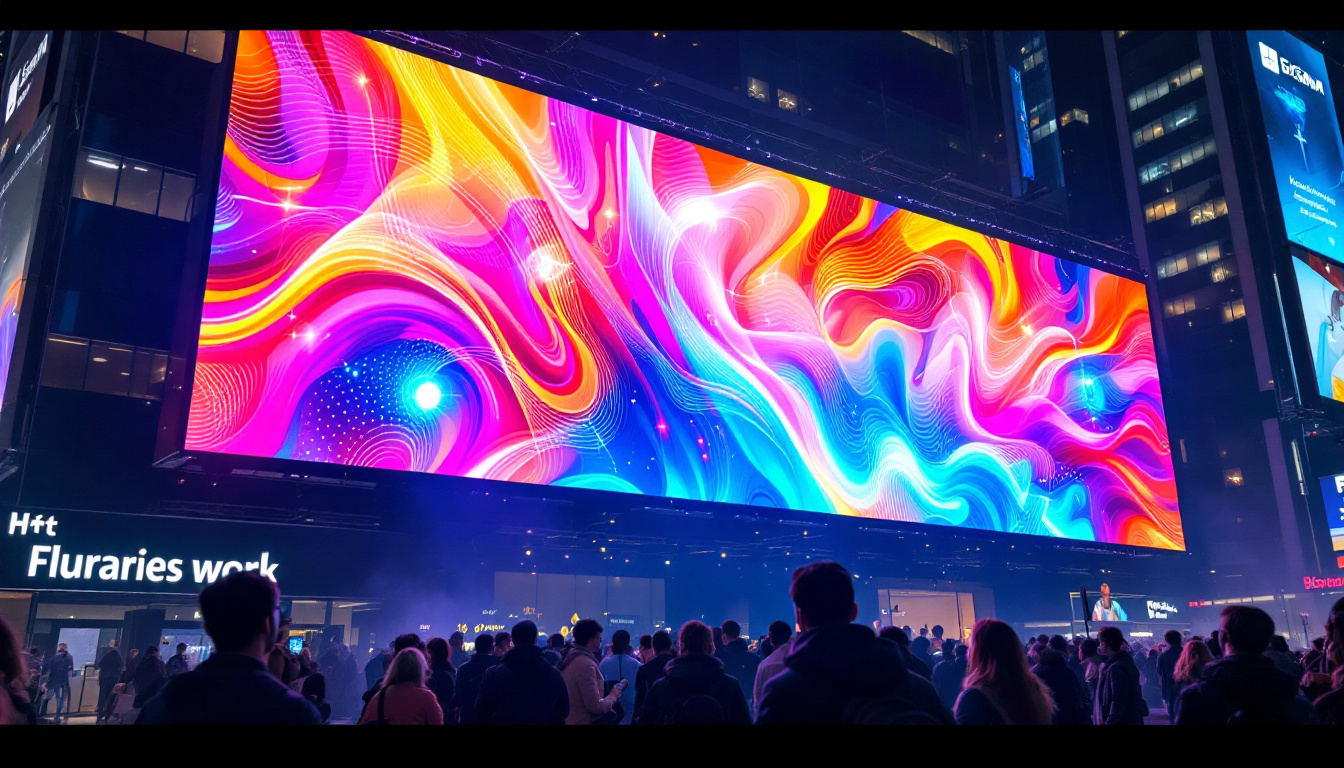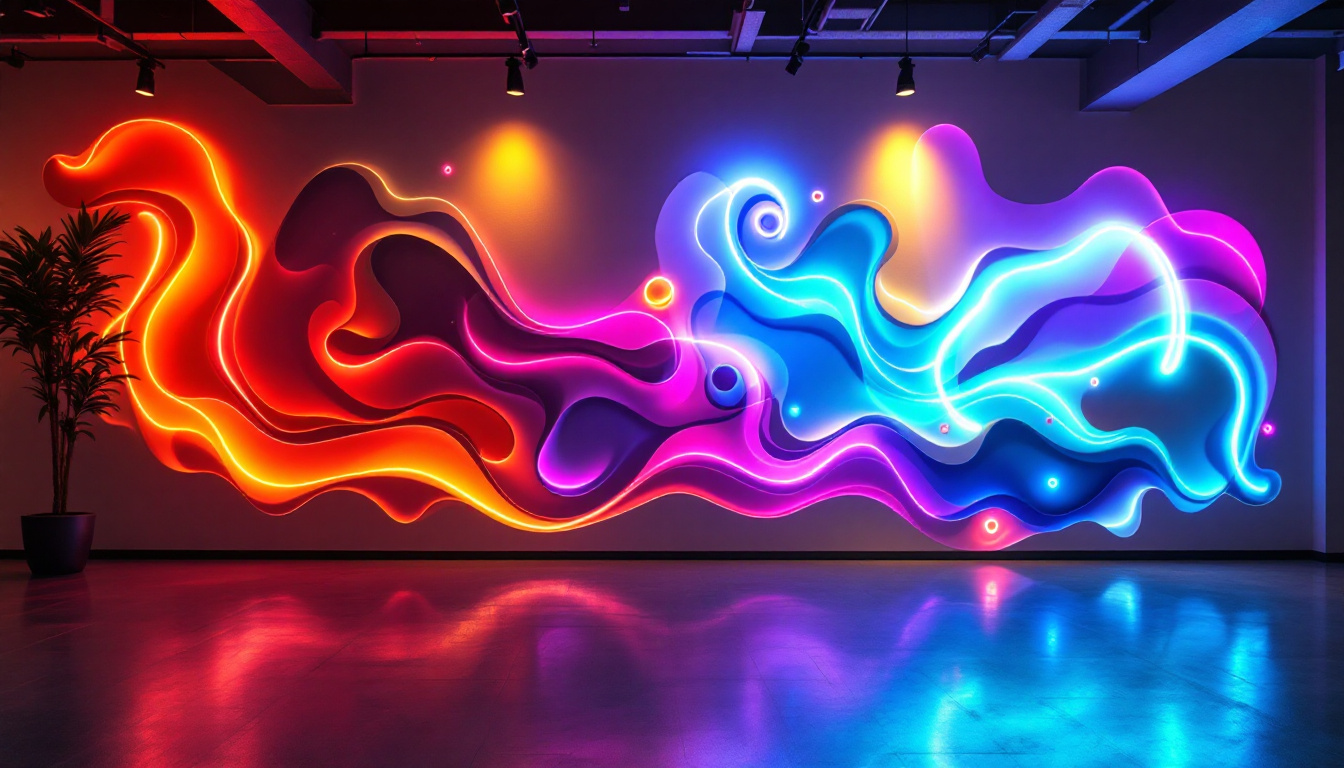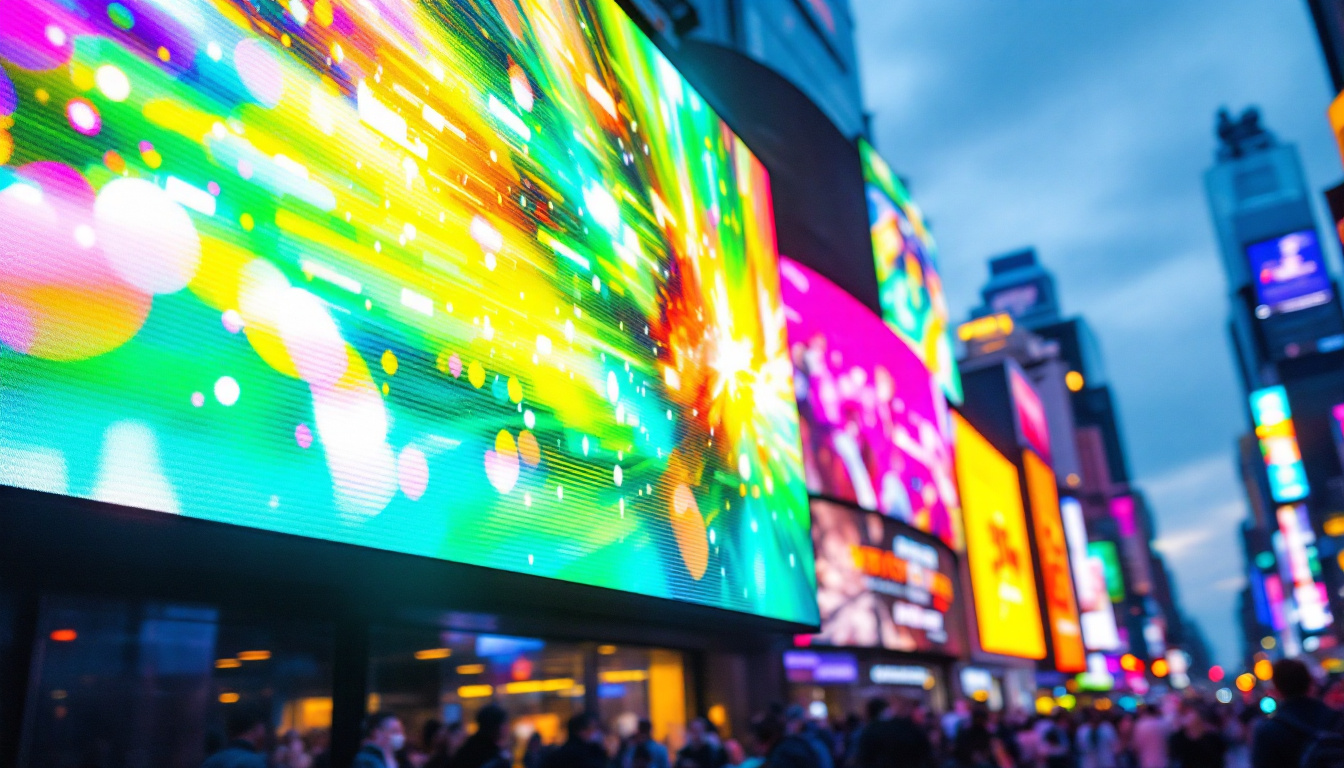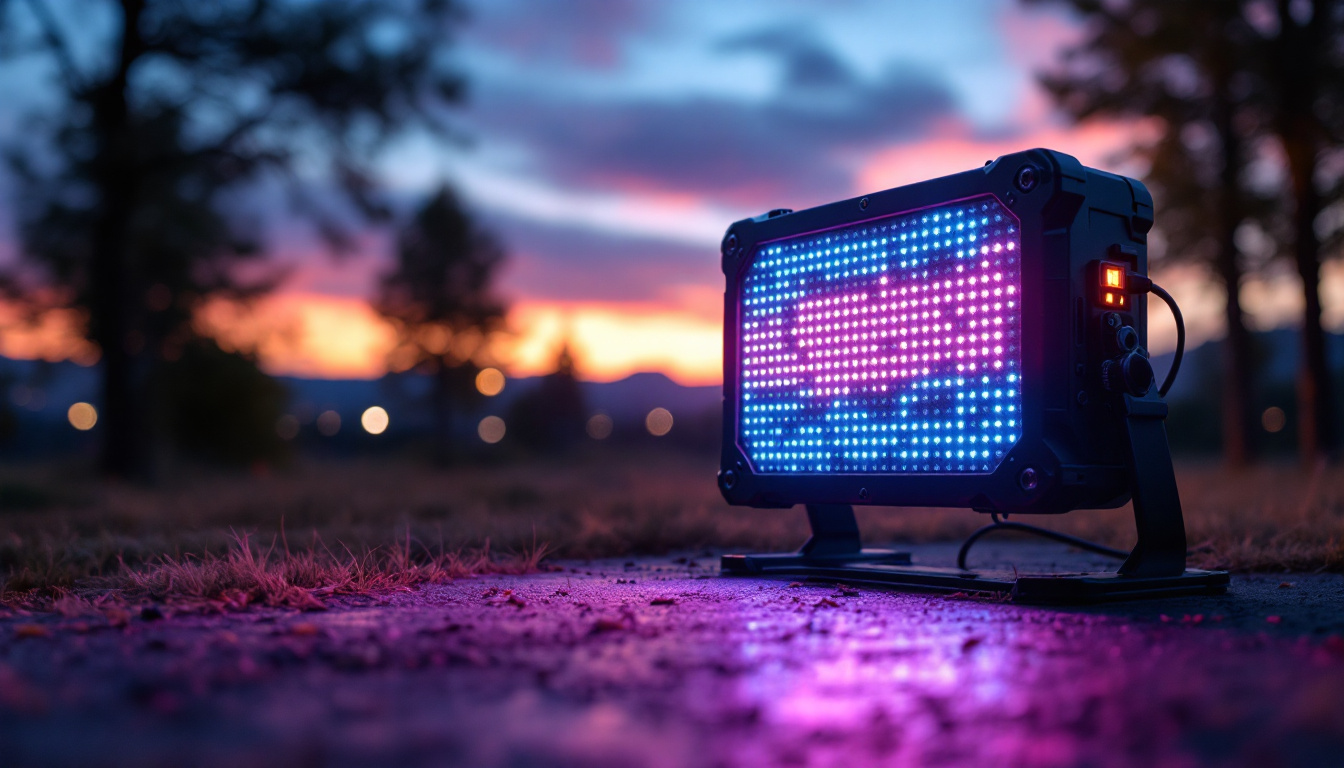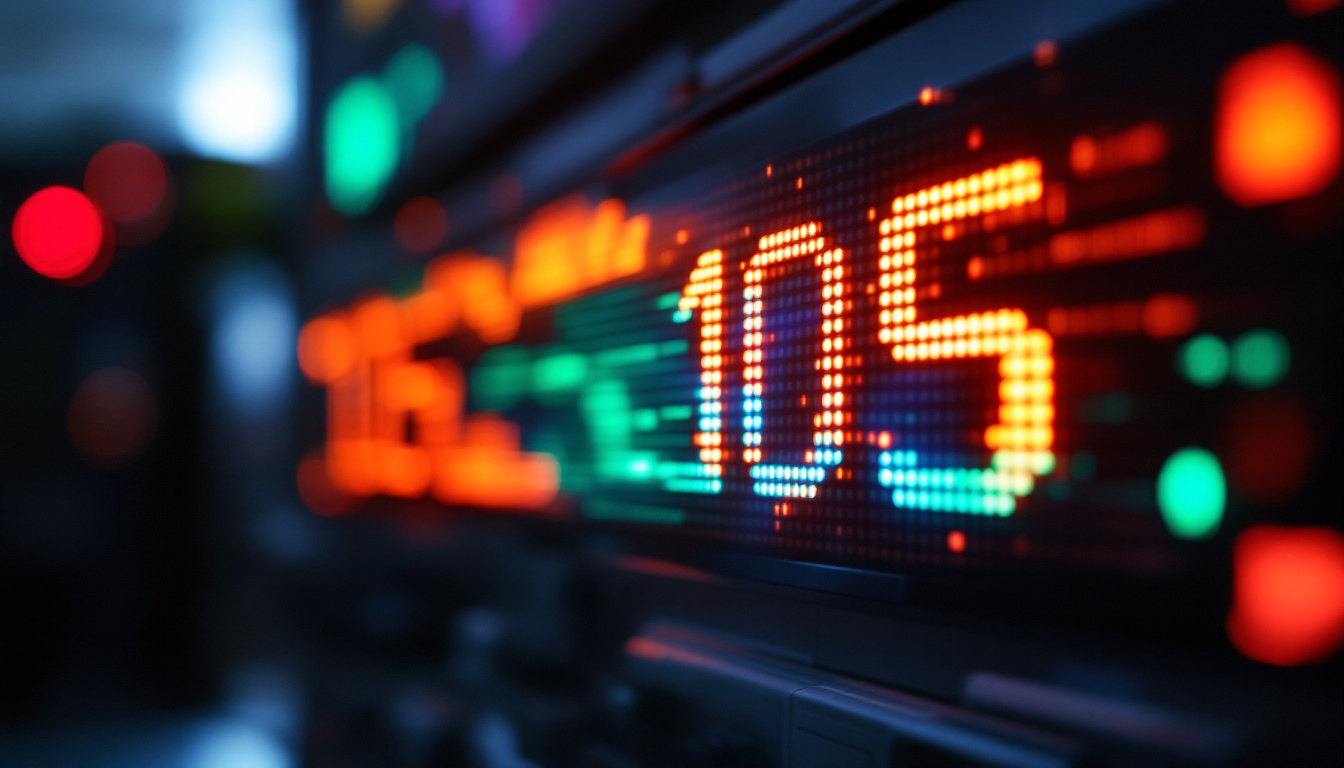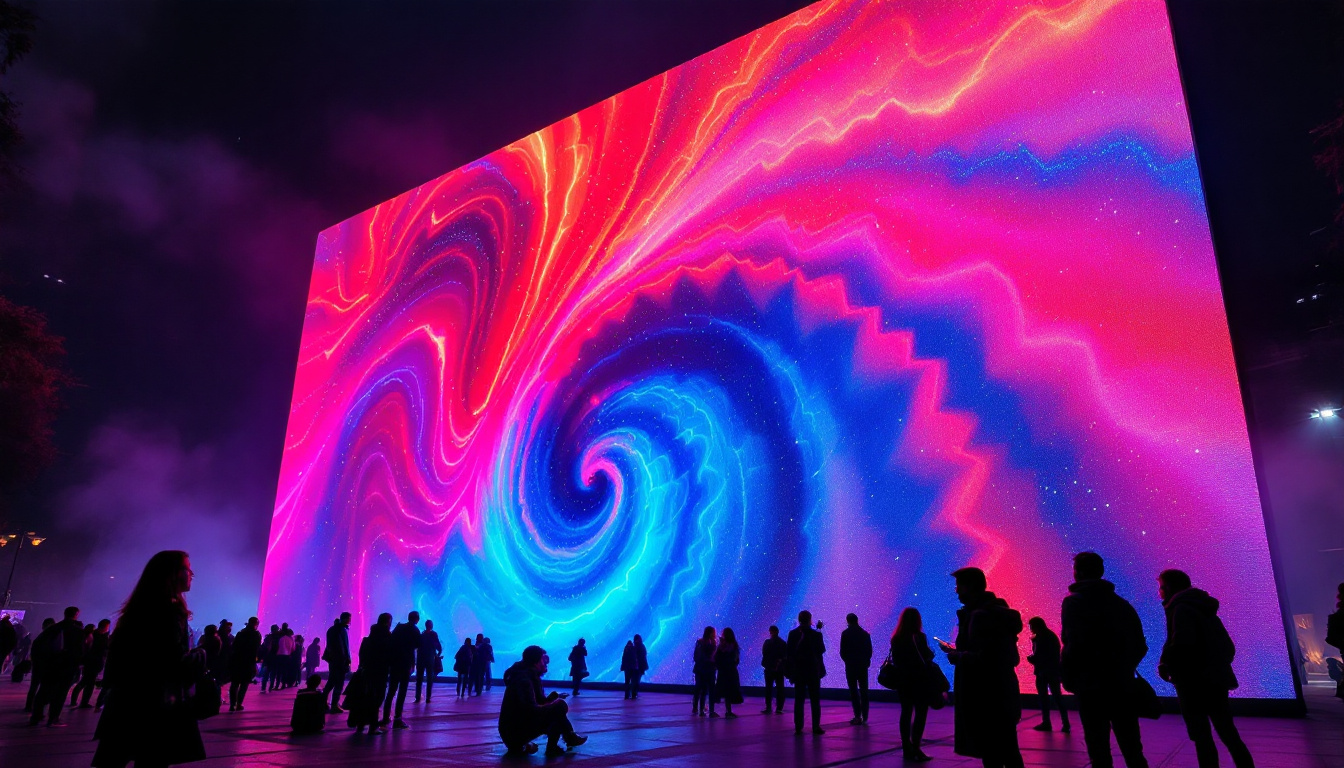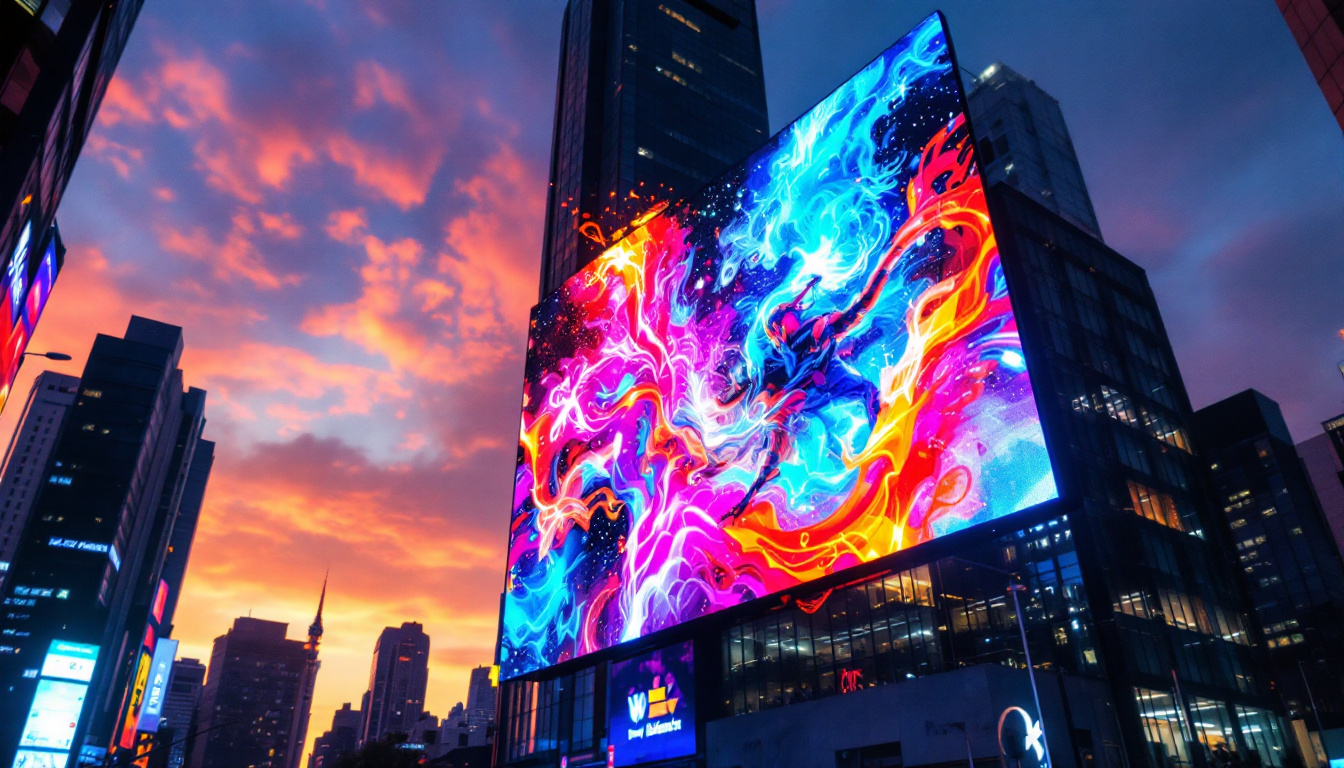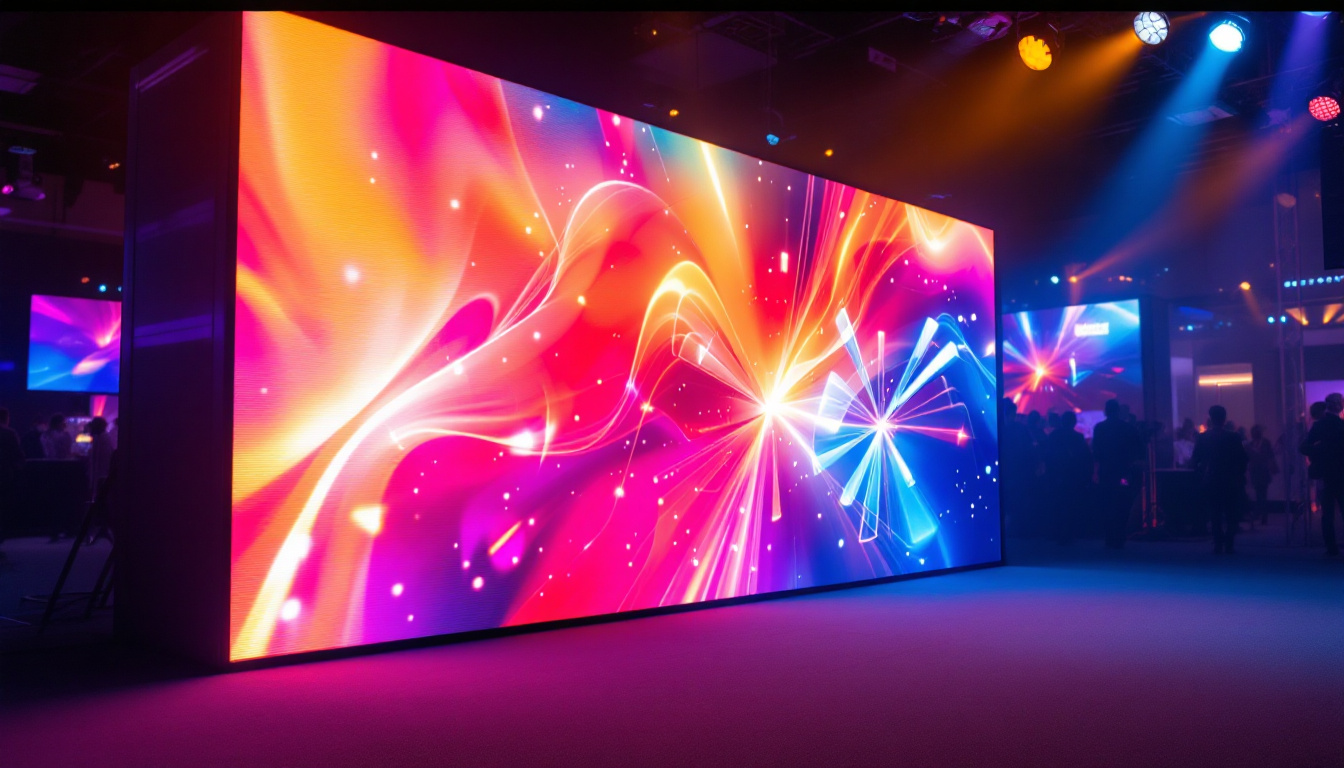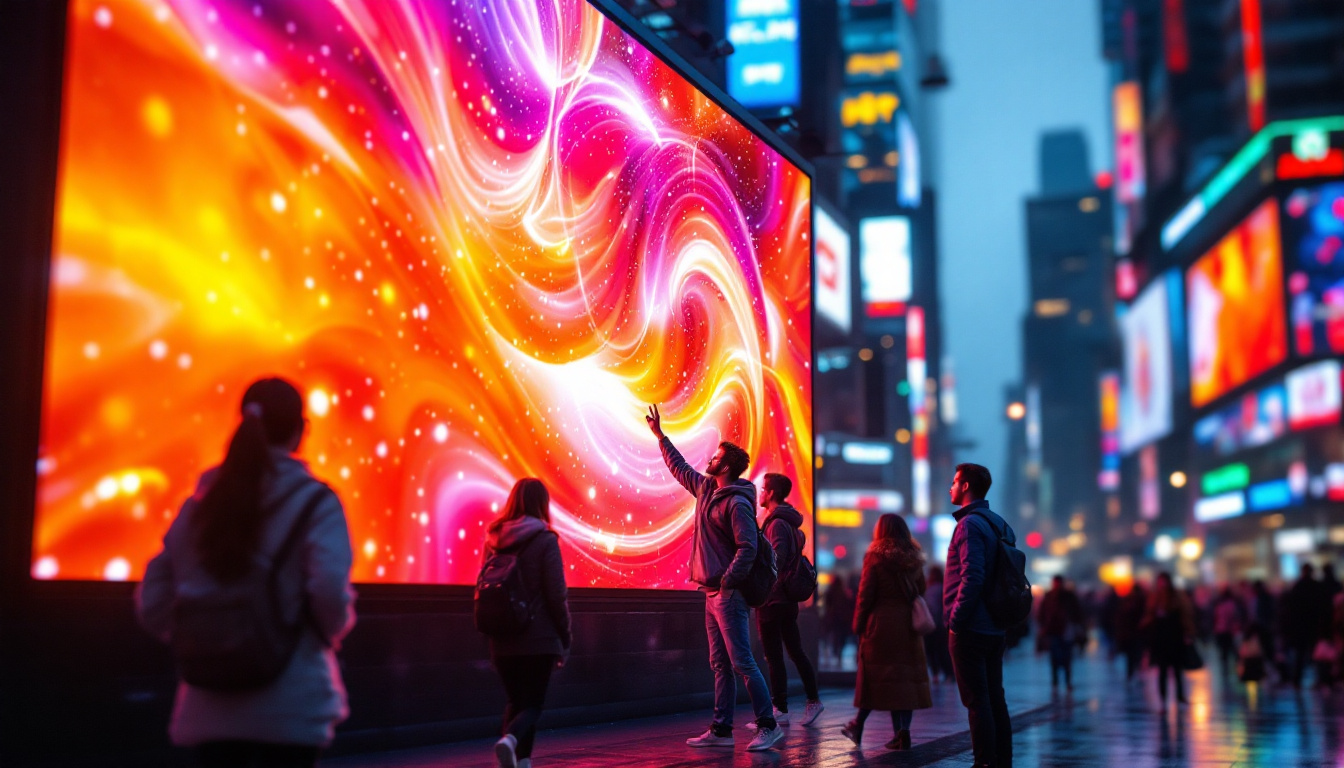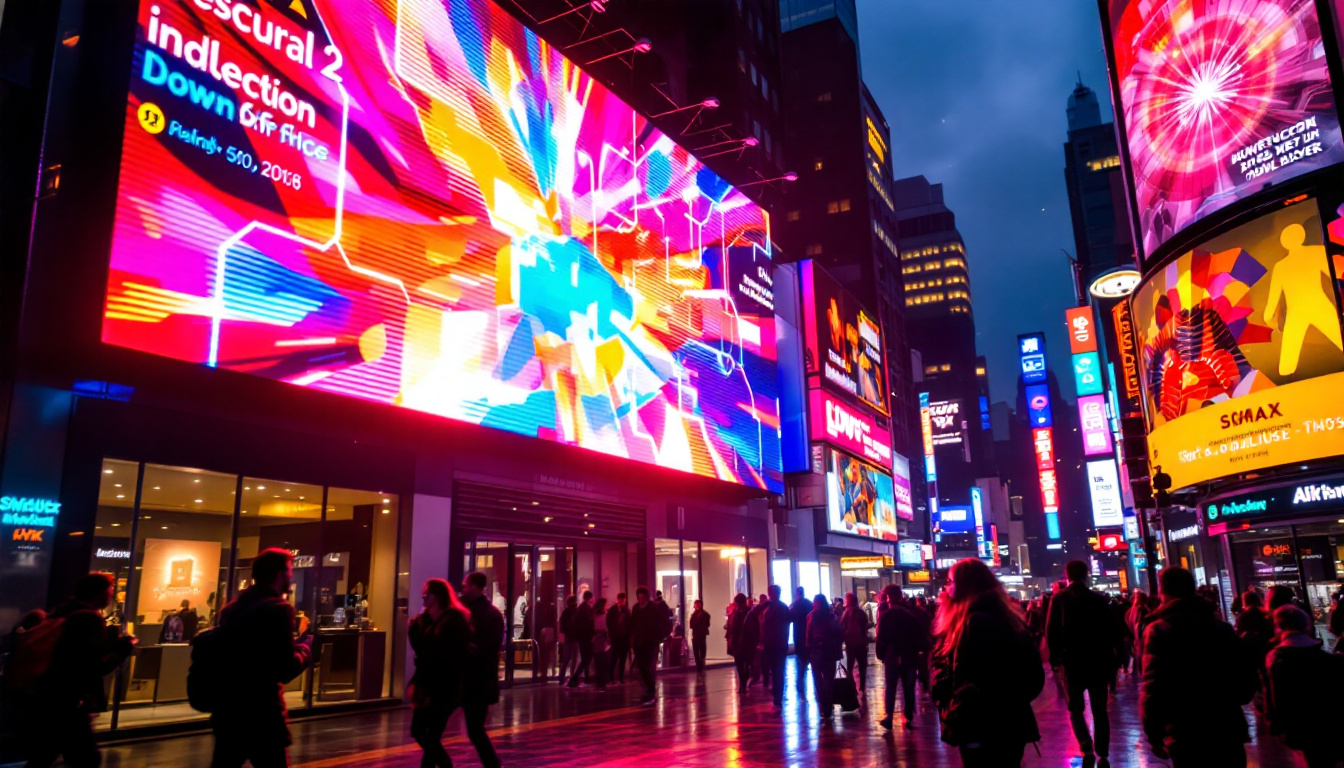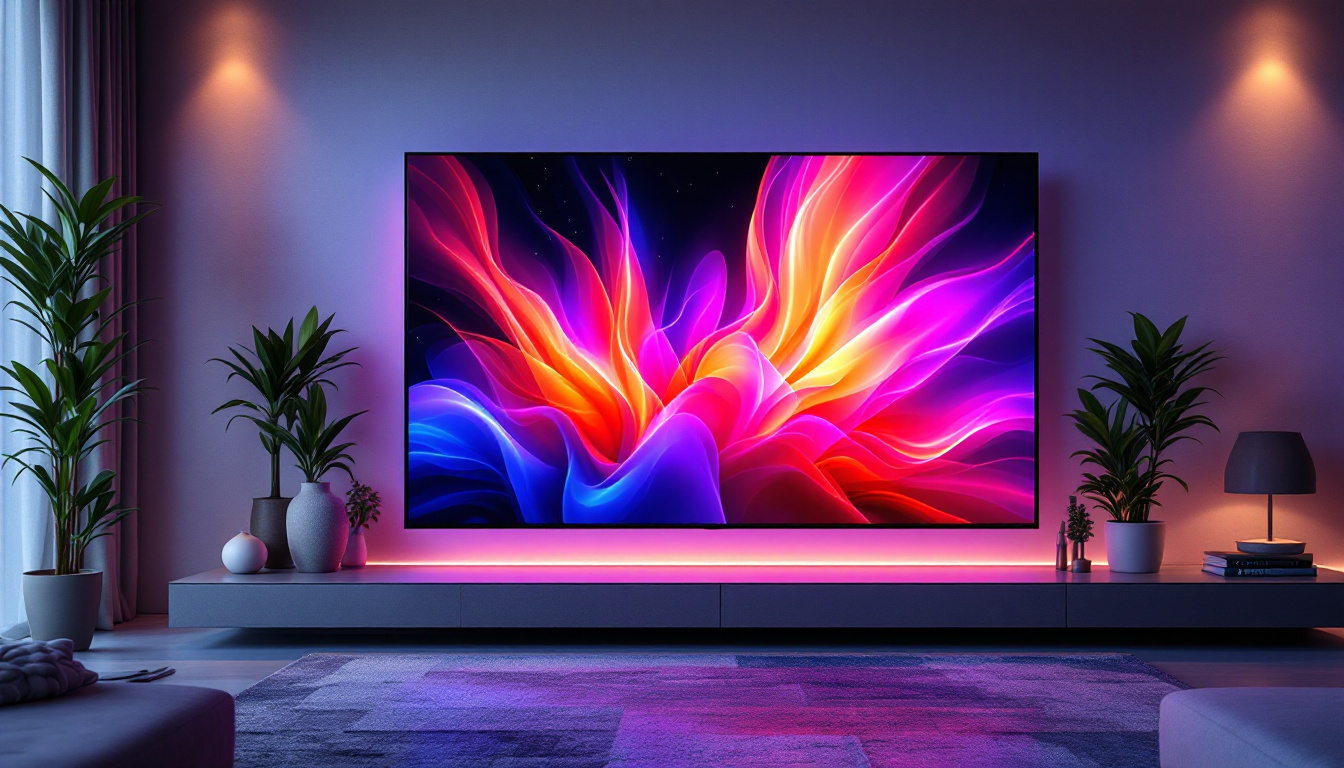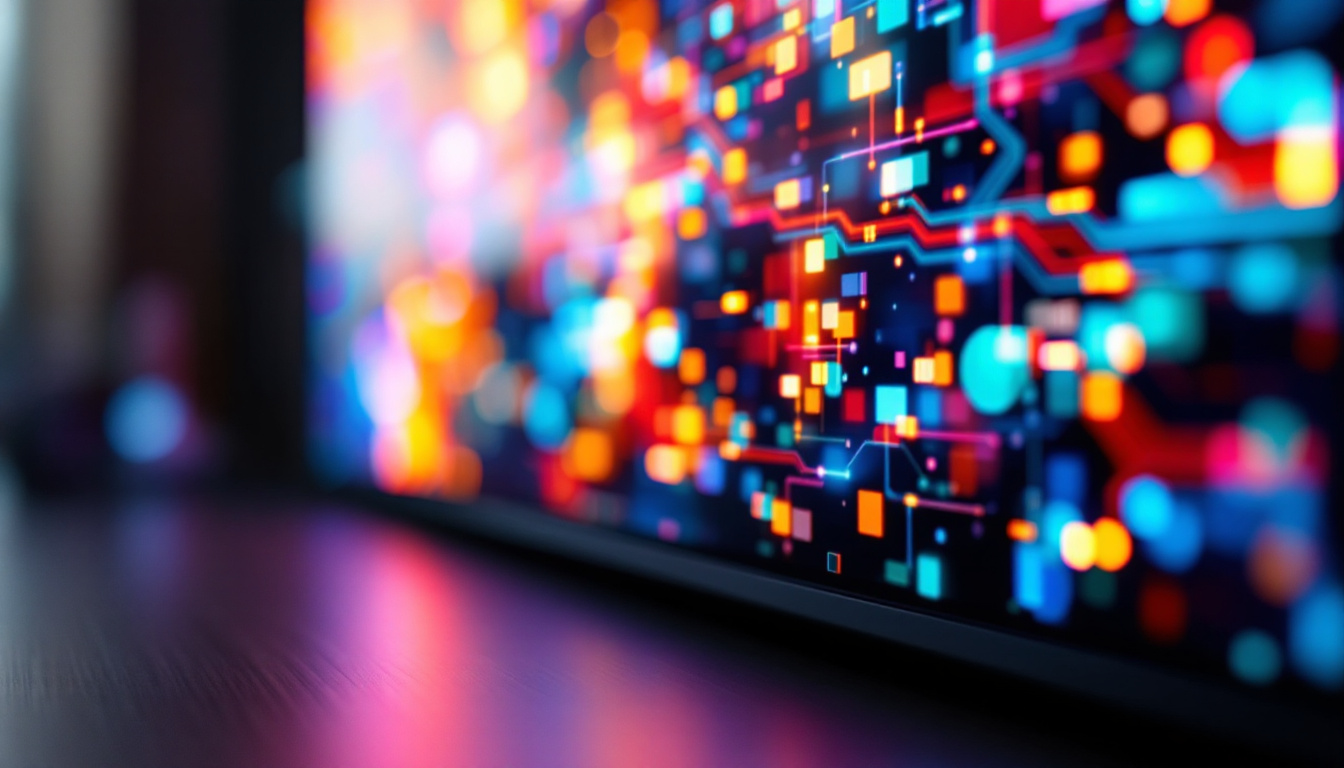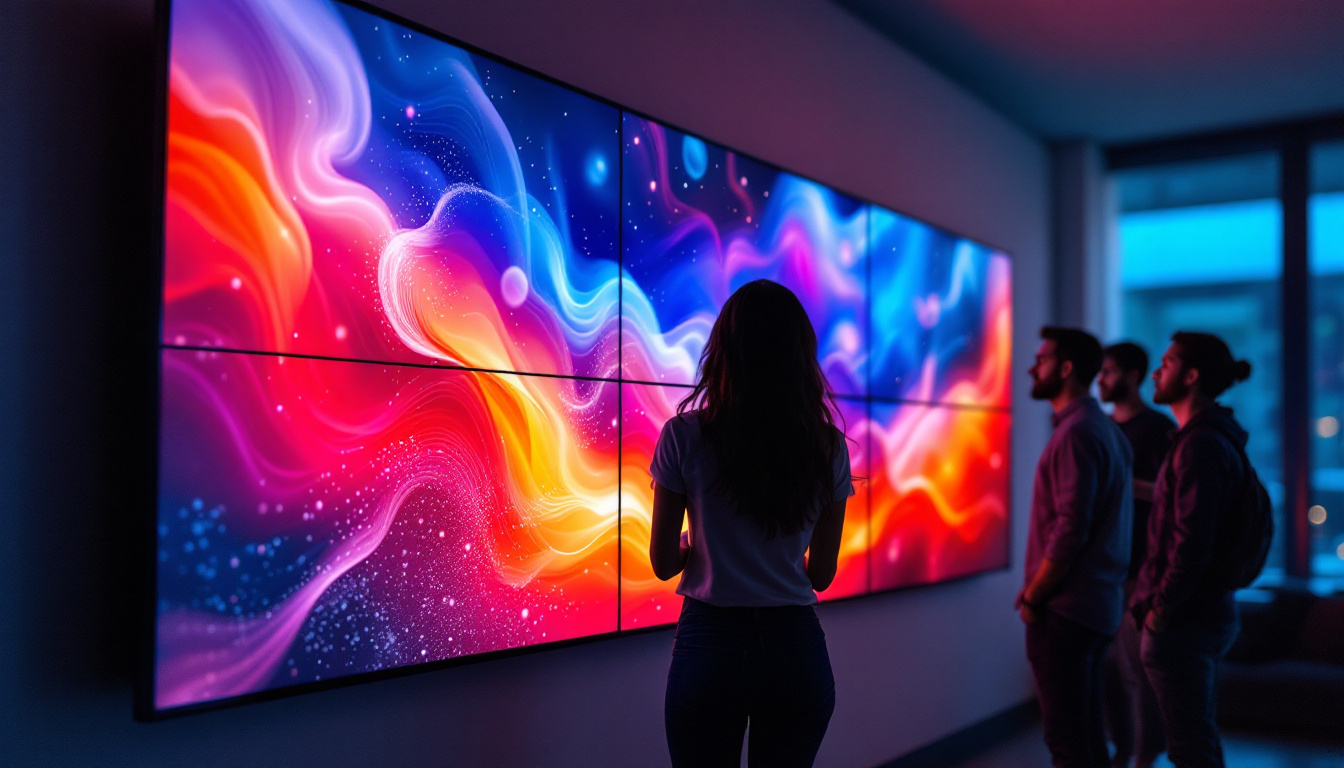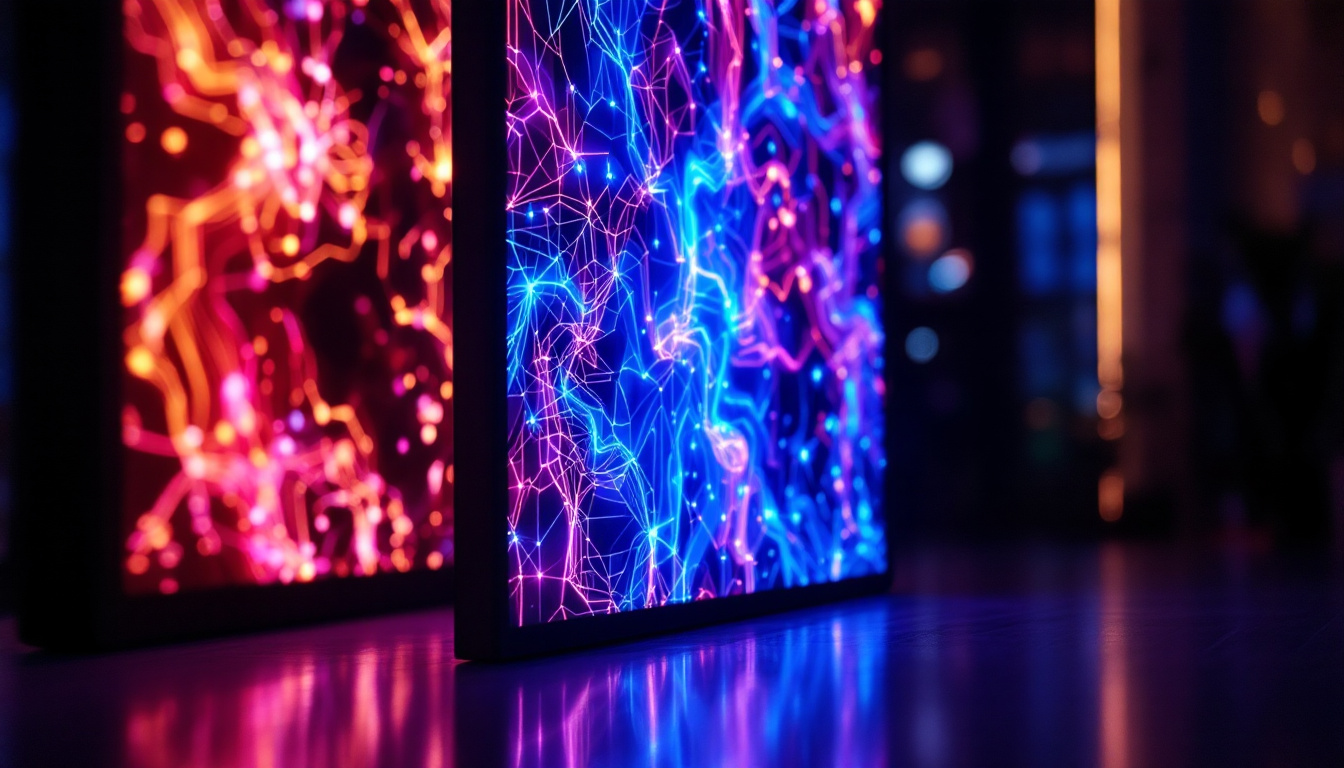In recent years, LED wall installations have revolutionized the way information is displayed and consumed in various environments. From large venues like stadiums and concert halls to retail spaces and corporate offices, LED displays have become a staple in modern digital communication. This article delves into the intricacies of LED wall installations, exploring their technology, applications, and benefits.
Understanding LED Technology
LED, or Light Emitting Diode, technology has advanced significantly since its inception. At its core, an LED is a semiconductor device that emits light when an electric current passes through it. This technology has been harnessed to create vibrant displays that can be used in a myriad of settings. The versatility of LED technology has led to its adoption in various industries, from consumer electronics to automotive lighting, showcasing its ability to enhance both functionality and aesthetics.
The Basics of LED Displays
LED displays consist of numerous individual LEDs arranged in a matrix to form images, videos, or text. These displays can be categorized into two main types: direct view and rear projection. Direct view displays are the most common, where the viewer sees the light emitted directly from the LEDs. Rear projection displays, on the other hand, use projectors to display images onto a screen, which is then illuminated by LEDs from behind. This method can provide a larger viewing area while maintaining a sleek design, making it a popular choice for large venues and events.
In terms of resolution, LED displays are often measured in pixel pitch, which refers to the distance between the centers of two adjacent pixels. A smaller pixel pitch results in a higher resolution, allowing for clearer and more detailed images. This is particularly important in environments where viewers are close to the screen. Additionally, advancements in technology have led to the development of high dynamic range (HDR) capabilities in LED displays, enhancing the contrast and color accuracy, which further elevates the viewing experience.
Types of LED Wall Installations
LED wall installations can be classified into various types based on their application and environment. Some of the most common types include:
- Indoor LED Walls: These are designed for use in enclosed spaces such as shopping malls, conference rooms, and theaters. They typically have a finer pixel pitch for better image quality. Indoor installations often incorporate advanced features such as interactive touch technology, allowing users to engage with the content in a dynamic way.
- Outdoor LED Walls: Built to withstand the elements, outdoor LED displays are often used for billboards, sports arenas, and public events. They are generally brighter and more robust than their indoor counterparts. The durability of outdoor LED walls is crucial, as they must endure varying weather conditions while delivering clear visibility even in direct sunlight.
- Transparent LED Displays: These innovative displays allow for visibility through the screen while still providing vibrant images. They are often used in retail environments to create eye-catching advertisements without obstructing the view of products. This technology not only enhances the shopping experience but also serves as a modern architectural element, blending seamlessly into the surroundings.
Moreover, the rise of flexible LED displays has opened up new possibilities for creative installations. These displays can be bent or shaped to fit unconventional spaces, allowing designers to think outside the box and create immersive environments that captivate audiences. As LED technology continues to evolve, we can expect even more groundbreaking applications that push the boundaries of visual communication.
Applications of LED Wall Installations
The versatility of LED wall installations makes them suitable for a wide range of applications across various industries. Their ability to deliver high-quality visuals and dynamic content has led to their adoption in numerous sectors.
Advertising and Marketing
One of the most prominent uses of LED displays is in advertising and marketing. Retailers and brands utilize LED walls to showcase promotions, new products, and engaging content that captures the attention of passersby. The vibrant colors and motion graphics of LED displays can significantly enhance brand visibility and customer engagement.
Moreover, digital signage powered by LED technology allows for real-time updates, enabling businesses to adapt their messaging based on current trends, events, or inventory levels. This flexibility is a game changer in the fast-paced world of retail marketing. The integration of social media feeds and user-generated content on these displays can further amplify customer interaction, creating a community feel that encourages shoppers to engage with the brand both online and offline.
Entertainment and Events
In the entertainment industry, LED wall installations have become essential for concerts, festivals, and live performances. They are used to create immersive experiences that captivate audiences. Large LED screens can display visuals that synchronize with music, enhancing the overall atmosphere of the event.
Additionally, sports arenas utilize LED displays for scoreboards, replays, and advertisements. The ability to present high-definition content in real-time keeps fans engaged and informed throughout the event. Beyond just sports, these installations can be used in theme parks and attractions, where they enhance rides and exhibits with stunning visuals that tell a story or provide an interactive experience, making every visit memorable.
Corporate and Educational Use
Corporate environments have also embraced LED wall installations for presentations, conferences, and training sessions. These displays facilitate effective communication by providing clear visuals that enhance understanding and retention of information.
In educational settings, LED walls can be used to create interactive learning environments. They allow for dynamic presentations that can incorporate videos, animations, and real-time data, making lessons more engaging for students. Furthermore, the ability to connect multiple LED screens can transform a traditional classroom into a collaborative space where students can work together on projects, share ideas, and visualize complex concepts through interactive simulations, fostering a more hands-on approach to learning.
Benefits of LED Wall Installations
The adoption of LED wall installations comes with numerous benefits that make them an attractive choice for businesses and organizations. Here are some of the key advantages:
High Visibility and Brightness
One of the most significant benefits of LED displays is their brightness. They can produce vivid colors and sharp images, even in well-lit environments. This high visibility ensures that content is easily seen and understood, regardless of the surrounding lighting conditions.
Outdoor LED walls, in particular, are designed to be exceptionally bright, making them ideal for advertising in direct sunlight. This capability allows businesses to reach a wider audience and maximize their advertising impact.
Energy Efficiency
LED technology is known for its energy efficiency compared to traditional display technologies. LED walls consume less power while providing superior brightness and image quality. This efficiency not only reduces operational costs but also contributes to a lower carbon footprint, making them a more sustainable choice for businesses.
Longevity and Durability
LED displays are built to last. With a lifespan that can exceed 100,000 hours, they require minimal maintenance and replacement. This durability is especially important for outdoor installations, which are exposed to harsh weather conditions.
Furthermore, the robust construction of LED displays makes them resistant to damage from impacts and vibrations, ensuring they remain operational even in high-traffic environments.
Installation Considerations
While the benefits of LED wall installations are clear, several factors must be considered during the installation process to ensure optimal performance and longevity.
Site Assessment
Before installation, a thorough site assessment is essential. This involves evaluating the location’s lighting conditions, viewing distances, and audience size. Understanding these factors will help determine the appropriate type of LED display and pixel pitch needed for the specific environment.
Additionally, assessing the structural integrity of the installation site is crucial. LED walls can be heavy, and proper mounting solutions must be employed to ensure safety and stability.
Content Management
Effective content management is vital for maximizing the impact of LED wall installations. Businesses should invest in content management systems (CMS) that allow for easy updates and scheduling of content. This flexibility enables organizations to keep their messaging fresh and relevant.
Moreover, creating high-quality content tailored to the display’s specifications will enhance viewer engagement. Content should be designed with the screen’s resolution and dimensions in mind to ensure clarity and visual appeal.
Future Trends in LED Wall Technology
The LED display industry is continuously evolving, with new technologies and innovations emerging regularly. Here are some trends that are shaping the future of LED wall installations:
Higher Resolutions and Pixel Densities
As technology advances, the demand for higher resolutions and pixel densities is increasing. Future LED displays will likely feature even smaller pixel pitches, allowing for ultra-high-definition images that enhance viewer experience. This trend will be particularly beneficial for applications where close viewing distances are common.
Integration with Smart Technologies
Smart technology integration is another trend gaining traction in the LED display market. Future installations may incorporate artificial intelligence (AI) and machine learning capabilities to optimize content delivery based on viewer behavior and preferences. This level of customization will enhance engagement and effectiveness.
Eco-Friendly Developments
As sustainability becomes a priority for many organizations, the LED industry is focusing on eco-friendly developments. This includes using recyclable materials in manufacturing and designing displays that consume less energy. Such initiatives will not only benefit the environment but also appeal to consumers who prioritize sustainability.
Conclusion
LED wall installations have transformed the landscape of digital communication, offering unparalleled visibility, versatility, and efficiency. As technology continues to advance, the applications and benefits of LED displays will only expand, making them an essential tool for businesses and organizations across various industries.
By understanding the intricacies of LED technology, installation considerations, and future trends, stakeholders can make informed decisions that harness the full potential of LED wall installations. Embracing this technology not only enhances communication but also positions organizations at the forefront of innovation in an increasingly digital world.
Discover LumenMatrix’s Innovative LED Solutions
Ready to elevate your digital communication and captivate your audience with stunning visuals? Look no further than LumenMatrix, a pioneer in LED display technology. Our comprehensive range of solutions, including Indoor, Outdoor, Vehicle, Poster, Sports, Floor, Custom, All-in-One, and Transparent LED Displays, is designed to meet the diverse needs of any business or event. Embrace the future of visual storytelling with LumenMatrix’s advanced LED modules that promise to transform your space and engage viewers like never before. Check out LumenMatrix LED Display Solutions today and experience the power of cutting-edge digital signage.

